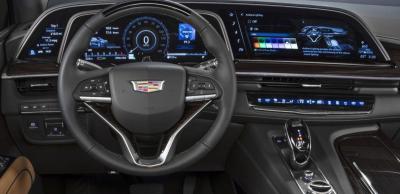OLED Technology in Automotive Applications
OLED (Organic Light-Emitting Diode) technology is being increasingly used in the automotive industry for both displays and lighting. Its thin, efficient, and flexible nature makes it ideal for various applications in vehicles.
Applications of OLED in Cars
OLED technology is being utilized in several areas of automotive design:
- Dashboard displays (instrument clusters, navigation, media controls, HVAC systems)
- Heads Up Displays (HUDs)
- Internal lighting
- External lighting (tail lights, turn indicators)
- Digital rear-view internal mirrors
Current Use of OLED Displays in Cars
Several car models already incorporate OLED displays. Simple PMOLED displays have been used by automotive manufacturers for years. For instance, the 2010 Lexus RX featured a white OLED display supplementing its main 8-inch display. Starting in 2021, premium cars began adopting AMOLED displays. Examples include the 2021 Mercedes S-Class with a 12.8-inch OLED display and the 2021 Cadillac Escalade with a 38-inch LGD P-OLED display. More recent models featuring OLED displays are the 2024 Genesis GV70 and the Nio ET9.

OLED Lighting in Cars
The automotive market is one of the earliest adopters of OLED lighting technology. In 2016, Audi introduced OLED taillights in the 2016 TT RS. Since then, several manufacturers, including Audi, BMW, Hongqi, and Mercedes, have incorporated OLED lighting panels into their vehicles. Recently, Audi announced that the 2025 Audi A6 Sedan will feature OLED lighting, specifically its Digital OLED 2.0 technology powered by OLEDWorks’ Atala panels. Each module includes eight digital OLED panels and 198 OLED segments, capable of refreshing the lighting pattern several times per second.

Advancements in OLED Technology for Automotive Use
Several companies are pushing the boundaries of OLED technology for automotive applications. LG Display showcased its latest OLED technologies at SID Displayweek 2025, including large-sized WOLED panels and automotive displays. Tianma demonstrated concave displays for automotive dashboards and a dual-screen automotive OLED display developed in collaboration with Corning.

Samsung Display has decided to adopt a tandem OLED stack architecture in its future automotive OLED panels to enhance efficiency and longevity. Hyundai Mobis is planning to launch an 18-inch rollable automotive display in 2028, with potential suppliers including Samsung Display and LG Display.
The trend towards using OLED technology in the automotive sector is expected to continue as manufacturers accelerate the development of automotive AMOLED displays and lighting solutions.



